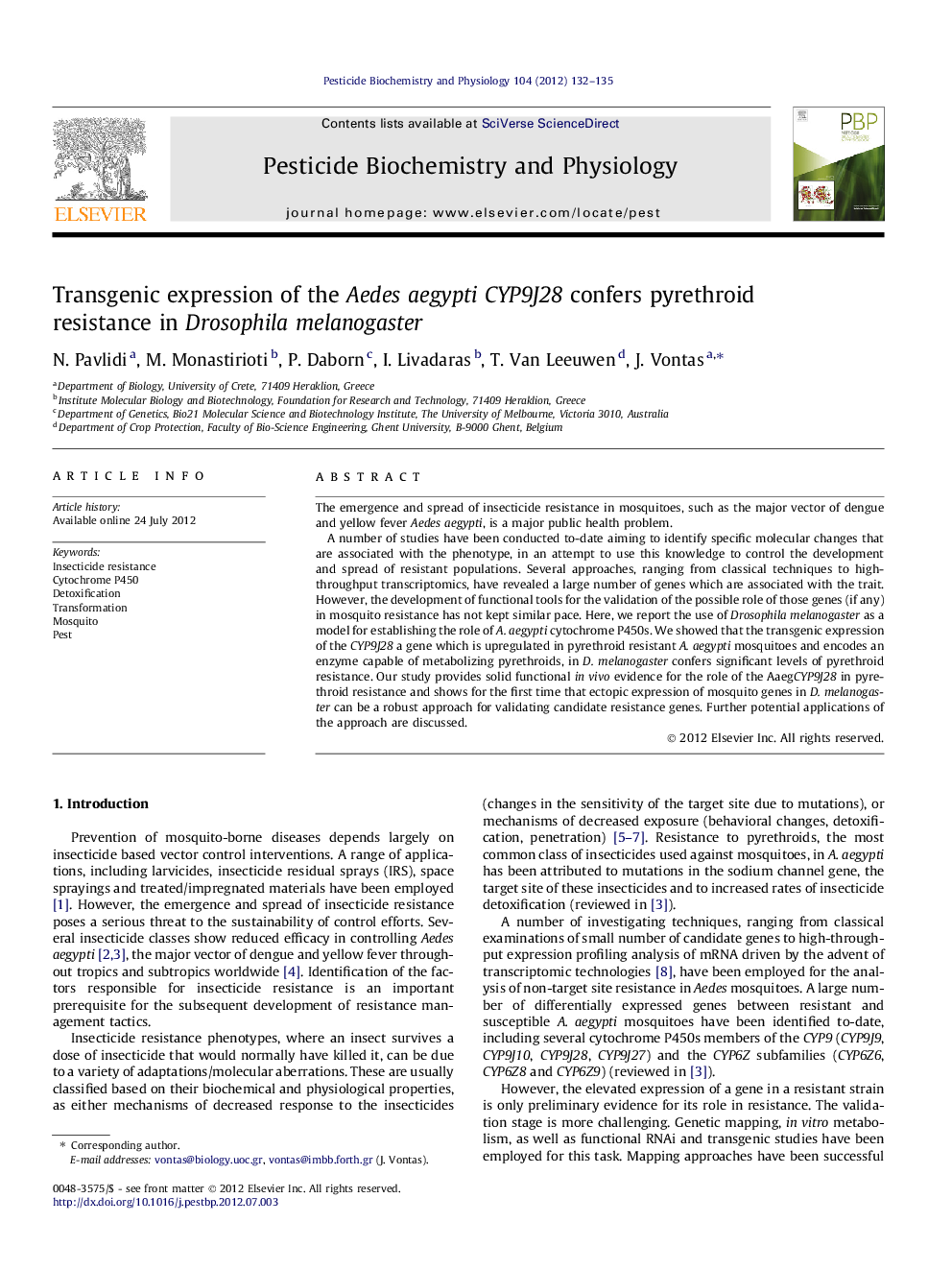| Article ID | Journal | Published Year | Pages | File Type |
|---|---|---|---|---|
| 2009578 | Pesticide Biochemistry and Physiology | 2012 | 4 Pages |
The emergence and spread of insecticide resistance in mosquitoes, such as the major vector of dengue and yellow fever Aedes aegypti, is a major public health problem.A number of studies have been conducted to-date aiming to identify specific molecular changes that are associated with the phenotype, in an attempt to use this knowledge to control the development and spread of resistant populations. Several approaches, ranging from classical techniques to high-throughput transcriptomics, have revealed a large number of genes which are associated with the trait. However, the development of functional tools for the validation of the possible role of those genes (if any) in mosquito resistance has not kept similar pace. Here, we report the use of Drosophila melanogaster as a model for establishing the role of A. aegypti cytochrome P450s. We showed that the transgenic expression of the CYP9J28 a gene which is upregulated in pyrethroid resistant A. aegypti mosquitoes and encodes an enzyme capable of metabolizing pyrethroids, in D. melanogaster confers significant levels of pyrethroid resistance. Our study provides solid functional in vivo evidence for the role of the AaegCYP9J28 in pyrethroid resistance and shows for the first time that ectopic expression of mosquito genes in D. melanogaster can be a robust approach for validating candidate resistance genes. Further potential applications of the approach are discussed.
Graphical abstractFigure optionsDownload full-size imageDownload as PowerPoint slideHighlights► Ectopic expression of AaegCYP9J28 in D. melanogaster. ► In vivo validation for the role of mosquito P450s in pyrethroid resistance. ► The usefulness of Drosophila model in studying metabolic-based resistance is discussed.
